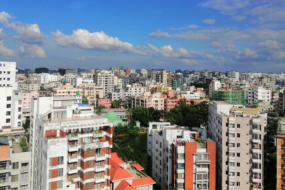Despite central government’s push to affordable housing under Pradhan Mantri Awas Yojana (PMAY) to achieve ‘Housing for All’, affordable housing , post- covid, has seen significant decline in both demand and supply in the last few years. Once again this potential segment needs to be revitalized to revive its fortunes.
The affordable housing segment gained strength after the Modi government in 2015 began to roll out incentives like credit-linked subsidy, low GST and tax relief to home buyers and developers to push both demand and supply.This made affordable housing quite appealing for both buyers and developers. However, the pandemic seriously impacted the affordable housing segment, with both demand and supply shrinking to their lowest levels.
Anarock’s Consumer Sentiment Survey finds that in 2022, demand for affordable housing has shrunk precariously. In 2018, nearly 39% property seekers in the top 7 Indian cities were keen on affordable homes priced within Rs 40 lakh. This demand shrunk to its lowest levels , with just 26% property seekers looking to buy homes in this budget segment.
There is significant unsold affordable stock across the top 7 cities. Of approximately 6.30 lakh unsold units in the top 7 cities by 2022-end, affordable housing accounted for over 27% as the demand has remained low for this segment since the pandemic.
Affordable Housing – Declining Supply Share
| Total New Supply across Top 7 Cities (Units) | |||||
| Year | 2018 | 2019 | 2020 | 2021 | 2022 |
| Total Supply (Units) | 1,95,300 | 2,36,560 | 1,27,960 | 2,36,700 | 3,57,650 |
| % Share of Affordable Housing | 40% | 40% | 30% | 26% | 20% |
Source: ANAROCK Research
One clear indicator of affordable housing’s declining fortunes is the significantly reduced supply. With demand for budget housing shrinking over the last few years, developers instead began launching more projects in the mid and premium segments priced between Rs 40 lakh and Ra 1.5 crore. This caused the supply share of affordable housing to decline steadily and reach its lowest level in 2022.
As per Anarock Research, out of total 3.58 lakh units launched in the top 7 cities in 2022, affordable housing accounted for just 20%. If we consider that in 2018, this segment had a 40% share of approx. 1.95 lakh units launched that year, the plunge is stark.
The rising interest rates and increase in property prices have contributed significantly to the plunging fortunes of the price-sensitive affordable housing segment.
According to Anuj Puri, Chairman, Anarock, for Modi government which is focused on boosting affordable housing, there is need for a strong intervention by way of providing more tax sops for housing end-users and investors. Besides, the price cap of Rs 45 lakh for affordable homes is not aligned with current market realities and this price band needs to be revised upwards to Rs 60-65 lakh for affordable homes in major cities and even higher to Rs 85 lakh in Mumbai. Further, the government needs to revise its rental housing policy to make it more attractive for private developers for its successful implementation.



